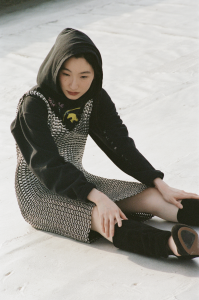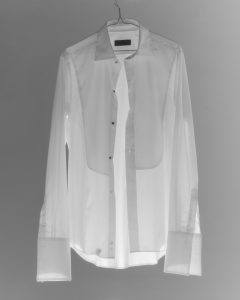As Wool Week UK launches, photographer Ian Lawson describes his fascination with the Outer Hebrides and its hard-working shepherd community
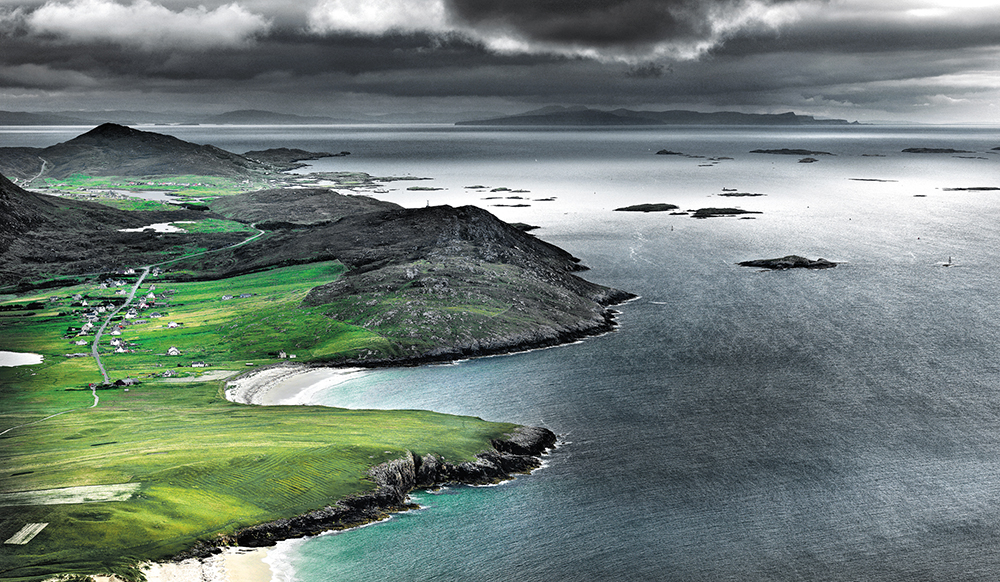
I first travelled to the Outer Hebrides in search of the light. The long summer days of the far north, the twilight hour of changing colours on Brae and Ben, and the open sky where the wind blows salt freely. It was to be a rendezvous with beaut; I went with an open mind and an open heart. This unique environment of unchanging beauty is the home of Harris Tweed and my book, From the Land Comes the Cloth, attempts to show the intimate connection between land, thread and weaver.
Everywhere I went, I found intrigue in this wild, illuminating land of tweed. I visited at different times of the year and watched the slow procession of the seasons. But four years ago, something very peculiar happened. One spring day, on a still morning of clearing skies over West Harris, the hills lay quiet and green. A shepherd was calling clear Gaelic commands from the dunes that overlook the ocean. As I watched his flock of white wool scampering towards him up the grassy slopes, the landscape unexpectedly came to life. It caught my eye, excited my mind and a vital connection was made. Land, shepherds and sheep, all cooperating with an impassioned sense of timing and order… Each fitted into an old routine. I realised that people are the essence of what this landscape is about for me – their lives, the very fabric of existence here.
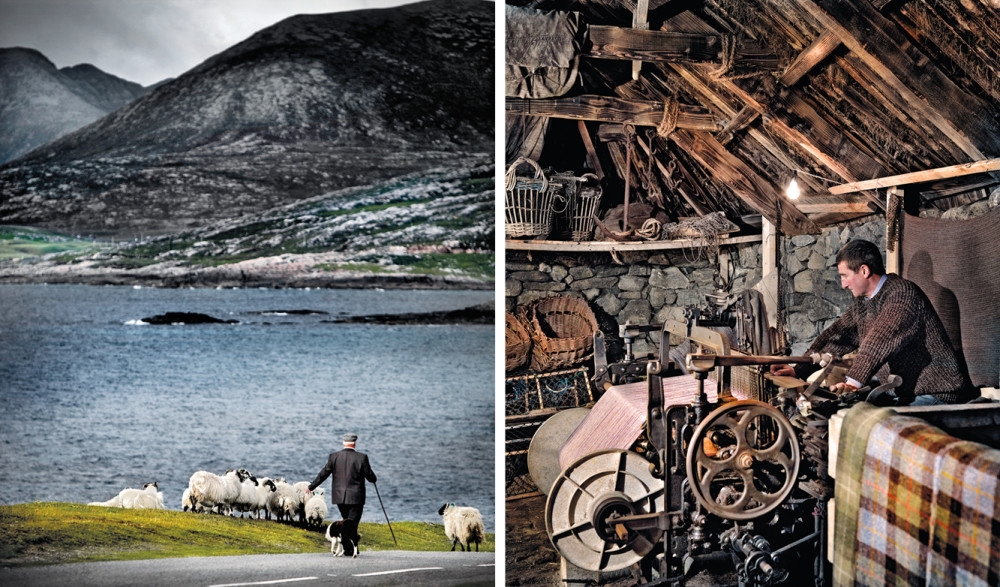
I soon found myself alight with inspiration and set about documenting the land at work. The story of wool to weaver provided me with a way into a culture of which I had little previous knowledge or experience. I came to think of Harris Tweed, not as a product but as a process, encompassing and illustrating an entire way of life. During the day of the sheep gathering, an ambition was born. I would commit myself to a heartfelt study focused on the Isles of Harris and Lewis, a project over which I could exercise complete artistic control. It was an opportunity to give something back to the place that had inspired my creative adventures and ambitions.
The Outer Hebrides are remote. In fact, it’s their very remoteness that attracts me. Every time I hear the phrase Outer Hebrides it conjures up an ancient land, a place on the edge. But when the sea was the main highway for travellers, these islands weren’t so very far away at all. The perpetual rhythm of the North Atlantic has shaped some of the oldest rocks in the world into fifty or so islands, around fifteen of them inhabited. Together, they make up the most extraordinary archipelago, home to close-knit communities, rare wildlife habitats and teeming seabird colonies. A photographer’s paradise.
Today’s inhabitants have inherited a rich cultural legacy reaching back to the Iron Age Celts, the Norsemen and other settlers and invaders. Everywhere I go, I find place names derived from Old Norse: Luskentyre, Horgabost, Scalpay, Shawbost, Ness, Callanish – a legacy from the Vikings who settled in these islands from the eighth century. Here among the rocks and peat, along the arteries of loch, road and sea, I’m glimpsing patterns of existence that have survived through generations. But most of all, my eye is drawn to the daily rituals of crofters in small townships and on isolated crofts, people in tune with their environment. Something about their world touches me. And I want to know more. Here’s the story about how I met with one of the people living here, taken from From The Land Comes The Cloth.
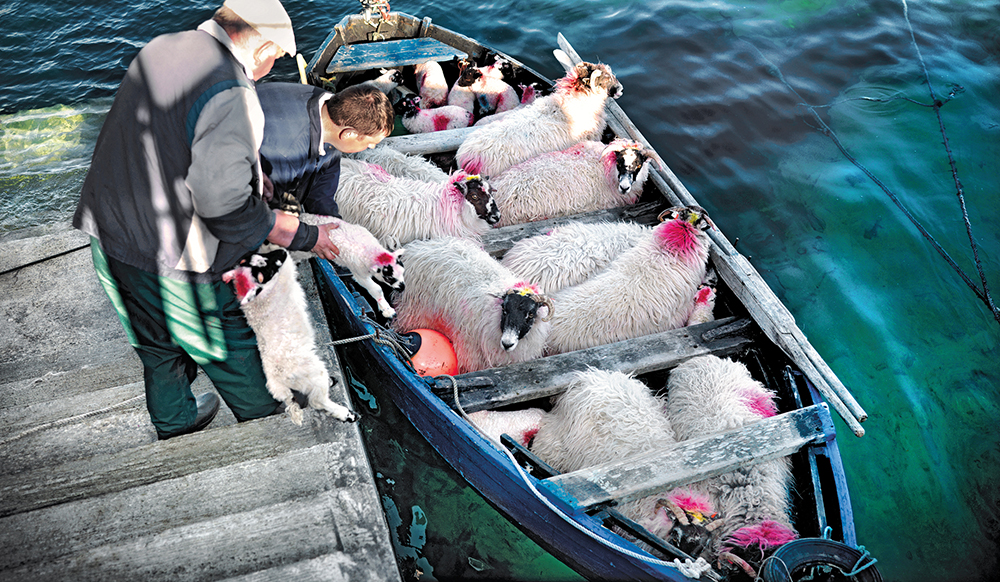
I meet Morag Mackinnon at the Luskentyre fank (sheep pen) in mid-summer. She is helping shepherds and fellow crofters clip and sort ewes and lambs, happy amongst the wool and hard graft. Morag’s job today is to buist each sheep with a red, blue or green marking once the fleece is clipped. She rolls and bags each fleece, her hands shiny with lanolin. The red cardigan she wears is flecked white with shorn wool. She works confidently and efficiently while entertaining us all with her playful wit.
A cool breeze from the shore eases the heat of the day. With heads down and backs bent, the shepherds work tirelessly, humour flowing as freely as fleece falling from the shears. Beyond the fank wall, flocks of oystercatchers are wading and calling. The wall itself is topped with sea pinks and scattered with shells, driftwood and bird feathers. Overhead, a noisy pair of Arctic terns defend their territory. Morag leans against the fank wall with a late lamb under her arm and a shepherd’s crook in her hand. She smiles mischievously at me and says: “Ian, you can take my picture now. The Beauty of Harris is ready for your camera!”
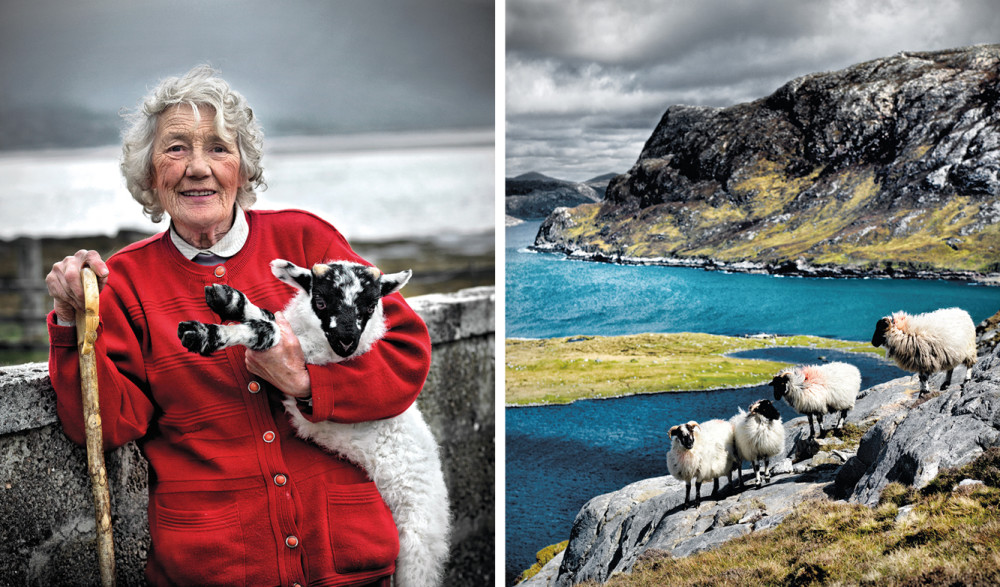
She jokes and teases me, making me feel so at home on the headland. I’m inspired by her zest for life and her humour, a Hebridean woman with spirit, passion and grit. She’s grasped life with both hands and lived it. Morag’s home is a stone’s throw from the fank and must have one of the best views in the world. Her garden is a sea meadow of wild flowers. Her front door looks out onto the white sands of Luskentyre. Morag has lived here for most of her life, working a croft of just under 80 acres.
She tells me she’s done her best with her croft and wouldn’t change a thing – even if she had to do it all over again. Morag’s family were crofter-weavers. Her mother gathered crottal, a flowerless plant that grows abundantly on the island’s rocks, to hand-dye wool outside the back door in a huge cast-iron pot. The crottal was placed in the pot along with the fleece and brought to the boil. After an hour or so, it produced a rich earth tone and was widely used for colouring tweed. The pot still stands by Morag’s back door, a reminder of days gone by.
Wool Week UK runs from Oct 5th – 11th 2015
Text and photography Ian Lawson


